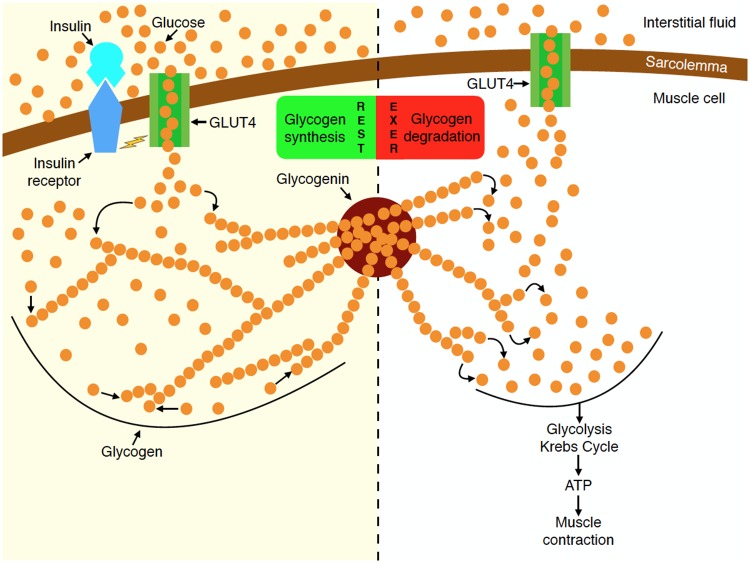Figure 3.
A simplified overview of glycogen metabolism at rest and during exercise. The sarcolemma separates the muscle cell interior from the interstitial fluid that surrounds the cell. At rest (left side), the consumption of carbohydrate stimulates the release of insulin from the pancreas. Insulin molecules bind to insulin receptors embedded in the sarcolemma. That binding sparks a cascade of intracellular responses that result in the movement of GLUT4 glucose transporters from the interior of the muscle cell into the sarcolemma, allowing for glucose to move into the cell. Once inside the muscle cell, glucose molecules are readied for inclusion into glycogen. Glycogenin is an enzyme that forms the center of glycogen particles, allowing for the initial formation of glycogen strands. During exercise (right side), GLUT4 transporters move into the sarcolemma without the assistance of insulin, aiding in glucose uptake into the cell. Simultaneously, glycogen degradation increases in response to changes in the concentration of metabolites inside the cell. The glucose molecules from the blood and those released from glycogen are oxidized to produce the adenosine triphosphate (ATP) molecules required to sustain muscle contraction.

